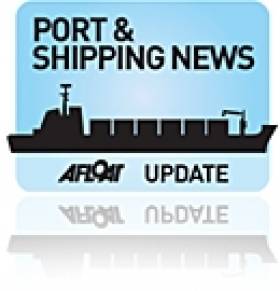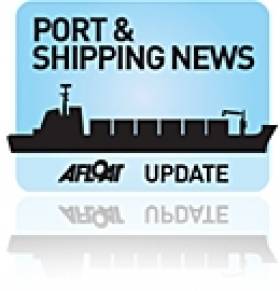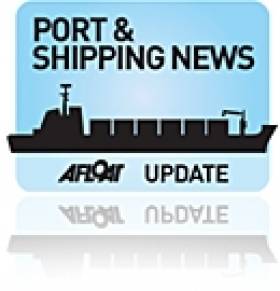Displaying items by tag: Follow the Fleet
#FollowTheFleet- www.followthefleet.ie is an educational resource designed to bring the world of maritime adventure into the classroom.
The website which is devised by the Irish Maritime Development Office (IMDO), is a simple and effective way for schoolchildren to gain an understanding of the major contribution the maritime industry makes to day-to-day life in Ireland.
The site is an online resource that can be integrated into the SESE curriculum and covers aspects of science, history, geography and trade based on the maritime industry.
www.followthefleet.ie uses a unique satellite tracker system, six easy to follow lesson plans, downloadable teaching plans and regular reports from the captains and crews of Irish owned or operated vessels.
Currently there is an undergoing process of redesigning the existing website. As a subscriber and user of the site, your opinion of www.followthefleet.ie is vitally important to the success and development of the education programme.
An online survey is available to help understand the interaction between users and www.followthefleet.ie
If you could take a moment to fill in the anonymous questionnaire to aid with the research, the survey is accessible here.
The Follow the Fleet team thank you for your continued participation and support of the www.followthefleet.ie programme.
‘Follow The Fleet’ Schools Essay Competition
Theme 1. Maritime History
Commodore John Barry- Father of the American Navy
The Adventures of Gráinne Mhaol
Admiral Francis Beaufort's Scale
Write an historical essay on one of these famous Irish mariners and their journeys of discovery and adventure. You can include pictures or photos if choosing this category to support your essay. The pictures or photos will need to include elements of geographical representation and can include pictures of vessels, land marks, vegetation or animals pertinent to the essay.
Theme 2. Maritime Trading in Ireland –Life of a Container
An essay on a trade route from or to Ireland and progress that a container carried on a cargo ship will make. You will need to describe the size of container, what cargo it will carry, the type of ship it will travel on, the port it will depart from and the port it will go to and the places the ship may call in-between. The nominated trade routes are:
Ireland – Norway.
Ireland – Italy.
Ireland- France.
You can include pictures or photos if choosing this category to support your essay. The pictures or photos will need to include elements of geographical representation of the two countries and can include pictures / photos of land marks or cargo pertinent to the Journey.
Theme 3. Technology and the Master Mariner.
An essay on how technology helps the working life of a ships captain. You can include details on the types of technology used aboard ship including:
Telecommunications on Ships
Navigating Ships and Technology
Technology & Safety at sea
Entrants can include pictures or photos if choosing this category to support your essay. The pictures or photos will need to be representative of the technology used on board ship.
You are free to choose an essay title from any of the 3 themes listed above. For further information about essay guidelines, entry forms and competition details and rules they can be found HERE
‘Follow the Fleet’ Essay Competition Reminder
Schools can register details by logging on the webite where a username and password will be provided. All details with essay guidelines, entry forms and competition details and rules are available on www.imdo.ie/followthefleet/news.asp
'Follow the Fleet' Schools Essay Competition
The Irish Maritime Development Office (IMDO) has announced details for the 2010/11 Follow the Fleet Schools Essay Competition. To enter the competition, schools are invited to log onto http://www.followthefleet.ie to register. Each school will be provided with a username and password.
This year the Follow the Fleet essay competition is centred on three themes: Maritime History, Maritime Trading in Ireland –Life of a Container and Technology and the Master Mariner. Within each theme there is a choice of three essay titles. You are free to choose an essay title from any of the themes listed.
To see the full list of essay titles, essay guidelines, entry forms,competition details and rules are please logon to http://www.imdo.ie/followthefleet/news.asp































































